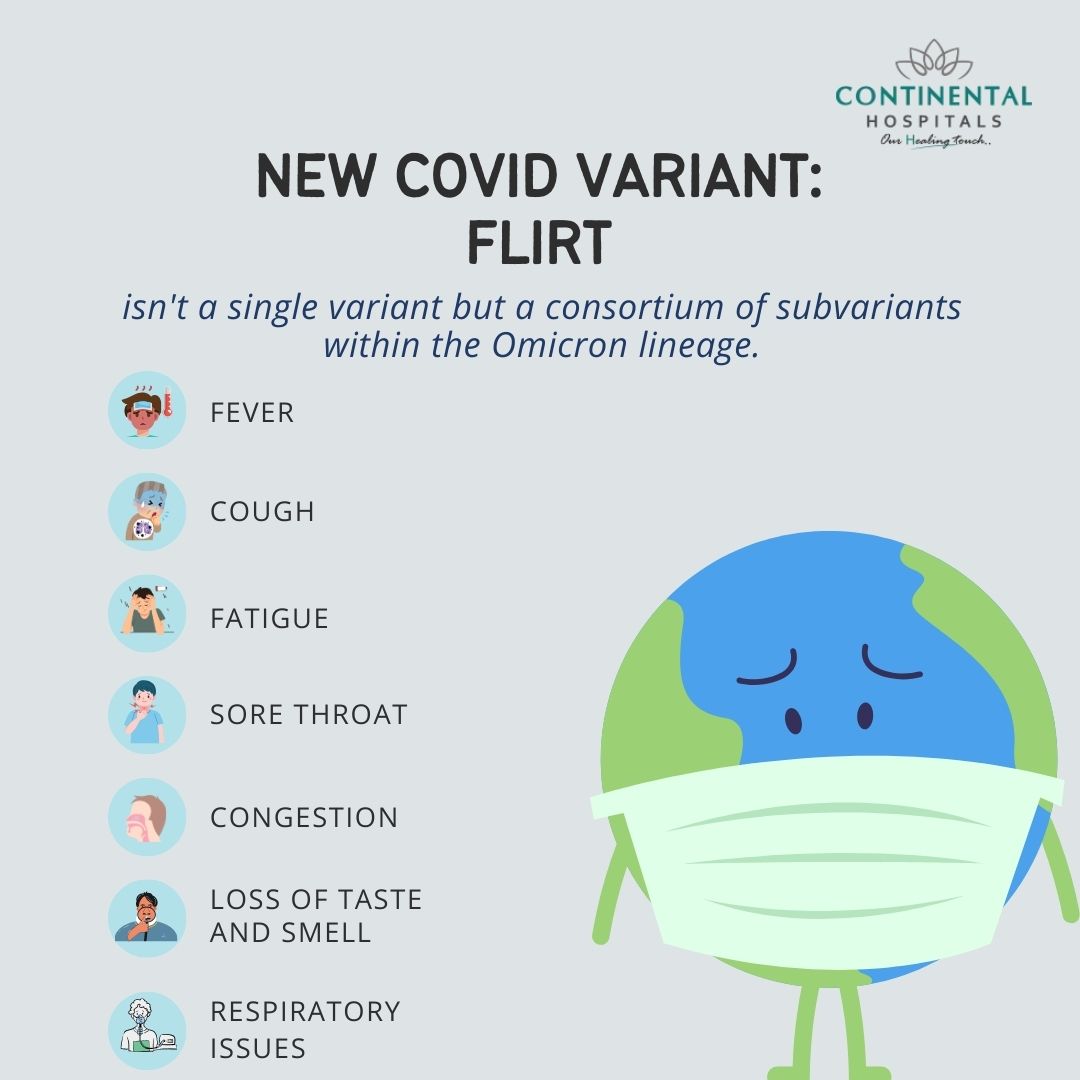The world's ongoing battle with COVID-19 continues with the emergence of new variants. The latest one, causing concern among health officials, is the FLiRT variant. This blog post dives deep into everything you need to know about FLiRT, from its origins and characteristics to its potential impact and how to stay safe.
New Covid Variant FLiRT in India
FLiRT, which is a nickname for the Omicron subvariant KP.2, has been detected in several Indian states including Maharashtra (with the highest number of cases at 146), West Bengal (36 cases), Gujarat (23 cases), and Rajasthan (21 cases) [Republic World].
This variant is believed to be more transmissible than previous variants and is causing a rise in cases [Indian Express].
There is some relief though, as hospitalization rates haven't risen proportionally to the increase in cases. This suggests the variant might cause milder illness [Deccan Herald].
Current information indicates that existing vaccines might not be as effective against FLiRT, and booster shots formulated for earlier variants may not provide significant protection [Indian Express].
Here are some additional points to consider:
These figures are likely not exhaustive and may change as more testing is conducted.
Health officials are closely monitoring the situation [Times of India].
What is the FLiRT Variant?
FLiRT isn't a single variant, but rather a group of related variants belonging to the Omicron lineage. The name itself is an acronym derived from the letters representing key mutations within these variants (F and L, R and T) that allow them to evade immunity. The two primary sub-variants under FLiRT are KP.1.1 and KP.2.
Origin and Spread:
The KP.2 variant, a major component of FLiRT, was first detected in India in November 2023. Since then, it has been identified in several countries, including the United States, United Kingdom, and South Korea. FLiRT variants are currently responsible for a significant portion of COVID-19 cases in some regions, particularly the US, where it accounts for nearly a quarter of infections.

What is KP.2 variant?
The KP.2 variant is a subvariant of the Omicron lineage of COVID-19. It's one of the main members of the group referred to as FLiRT, named for the key mutations that allow it to potentially evade immunity. KP.2 emerged in India in early 2024 and has since been detected in several other countries. It appears to be more transmissible than previous variants, leading to concerns about a rise in cases. While research is ongoing, initial data suggests that KP.2 infections may not necessarily result in a surge of severe illness or death.
Key Characteristics of FLiRT:
Immune Escape: FLiRT's defining feature is its ability to evade immunity from previous infections and vaccinations, particularly those based on older strains. This is due to mutations on the spike protein, the part of the virus that attaches to human cells.
Transmission: Experts believe FLiRT variants are more transmissible than earlier Omicron strains. This increased transmissibility contributes to the rise in cases observed in certain areas.
Severity: While data is still emerging, current indications suggest FLiRT infections may not be inherently more severe than previous variants. However, the increased transmissibility can still lead to a surge in hospitalizations, particularly among vulnerable populations.
Symptoms of FLiRT
Respiratory Issues: Cough, sore throat, congestion, and runny nose are frequently reported symptoms of FLiRT. These can range in severity from mild irritation to a persistent cough that disrupts daily activities.
Fever: An elevated body temperature, often accompanied by chills, is another telltale sign of FLiRT infection. The fever might be mild or reach higher levels, depending on the individual's immune response.
Fatigue and Body Aches: Feeling generally tired and experiencing muscle aches and soreness are common complaints among those infected with FLiRT. This fatigue can significantly impact energy levels and make it difficult to perform daily tasks.
Headache: Headaches are another frequent symptom associated with FLiRT. These can vary in intensity and location, ranging from a dull ache to a throbbing pain.
Loss of Taste or Smell: While less common than in earlier variants, some individuals infected with FLiRT might experience a partial or complete loss of taste or smell. This symptom usually resolves within a few weeks.
Risk of FLiRT
Increased Transmission: Early data suggests that KP.2, a key member of FLiRT, is more transmissible than previous variants. This heightened transmissibility could lead to a faster spread of the virus, potentially resulting in a rise in case numbers. This increased risk of transmission is particularly concerning for vulnerable populations, such as the elderly and immunocompromised individuals, who might experience more severe illness.
Breakthrough Infections: FLiRT's ability to potentially evade existing immunity raises the risk of breakthrough infections. This means that even individuals who have been vaccinated or previously infected with COVID-19 could still become infected with FLiRT. However, it's important to note that these breakthrough infections might be milder compared to those caused by earlier variants.
Severity of Illness: While FLiRT can potentially lead to breakthrough infections, the variant's overall severity remains under investigation. Initial observations suggest that FLiRT infections may not necessarily translate to a surge in hospitalizations or deaths. This could be due to several factors:
Prior Immunity: Widespread vaccination and prior infections, even if they don't completely prevent reinfection, might still offer some level of protection against severe illness. This could lessen the impact of FLiRT on healthcare systems.
Omicron's Legacy: The Omicron variant, the ancestor of FLiRT, generally caused less severe disease compared to earlier variants. This inherent characteristic might be carried over to FLiRT, leading to milder illness in some cases.
Staying Safe in the Age of FLiRT:
The emergence of FLiRT underscores the importance of continued vigilance. Here's what you can do to protect yourself and others:
Vaccination and Boosters: Getting fully vaccinated and boosted with the latest available vaccines remains the most effective way to prevent serious illness from COVID-19, including FLiRT.
Masking and Social Distancing: Wearing masks indoors, especially in crowded spaces, and maintaining social distance are crucial measures to reduce transmission.
Testing and Isolation: If you experience COVID-19 symptoms, get tested promptly and isolate yourself to prevent spreading the virus.
Staying Informed: Keep yourself updated on the latest information from reliable sources like the World Health Organization (WHO) and your local health authorities.
The emergence of FLiRT is a reminder that the COVID-19 pandemic is not over. However, with continued vigilance, responsible behavior, and ongoing scientific advancements, we can navigate this new challenge and protect ourselves and our communities. By staying informed, taking precautions, and getting vaccinated and boosted, we can effectively flirt with FLiRT, ensuring it doesn't turn into a full-blown relationship.
Related Blog Post:
.webp)














